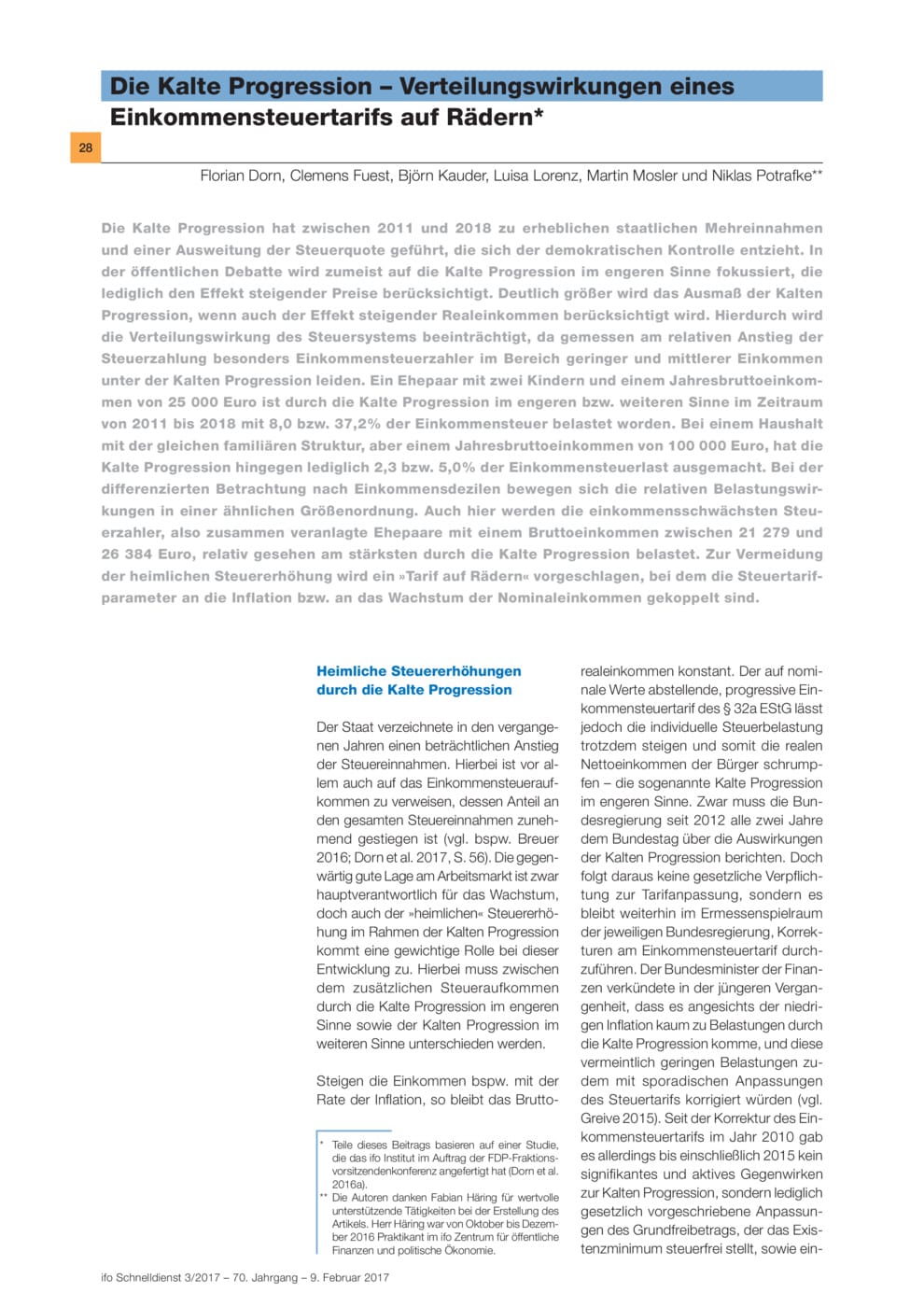Bracket Creep – Distribution Effects of a Rolling Income Tax Rate
ifo Institut, München, 2017
ifo Schnelldienst, 2017, 70, Nr. 03, 28-39

Bracket creep led to a significant upturn in additional state revenues between 2011 and 2018 and an increase in the tax rate, which is no longer under democratic control. The public debate largely focuses on bracket creep in the narrower sense of the term, which only takes into account the effect of rising prices. The extent of bracket creep is also far greater if the effect of rising real income is also taken into account. Bracket creep restricts the distributive effect of the taxation system, since low or medium income earning tax payers are particularly hard hit by this phenomenon as measured by the relative increase in tax payments. A married couple with two children and an annual gross income of 25,000 euros was taxed at a rate of 8.0% and/or 37.2% during the period from 2011 and 2018 thanks to bracket creep in the narrower and broader sense. In a household with the same family structure, but an annual gross income of 100,000 euros, by contrast, bracket creep only accounted for 2.3% and/or 5.0% of the income tax burden. In the differentiated analysis of income deciles, the relative burden effects are of a similar size. Here too the lowest earning taxpayers, namely married couples with a gross income of between 21,279 and 26,384 euros, were the most heavily burdened by bracket creep in relative terms. To prevent hidden tax increases, the authors propose a “rolling tax rate” whereby the tax tariff parameter is coupled with inflation and/or growth in nominal income.